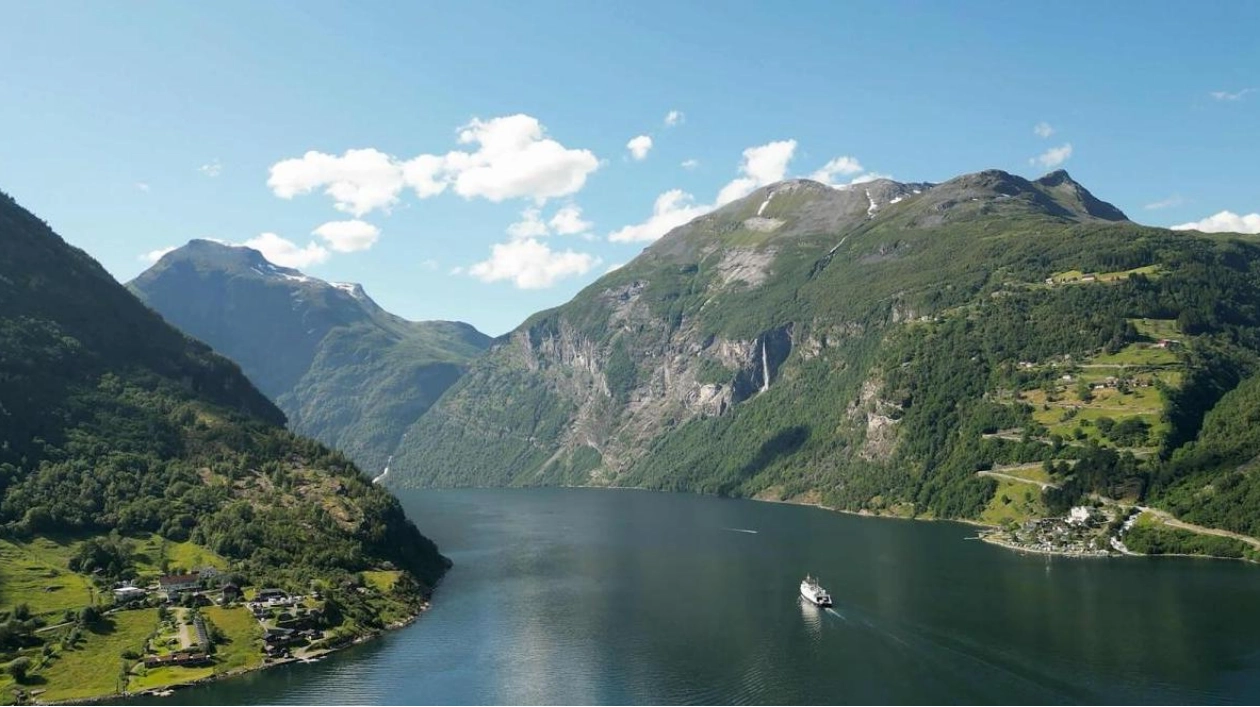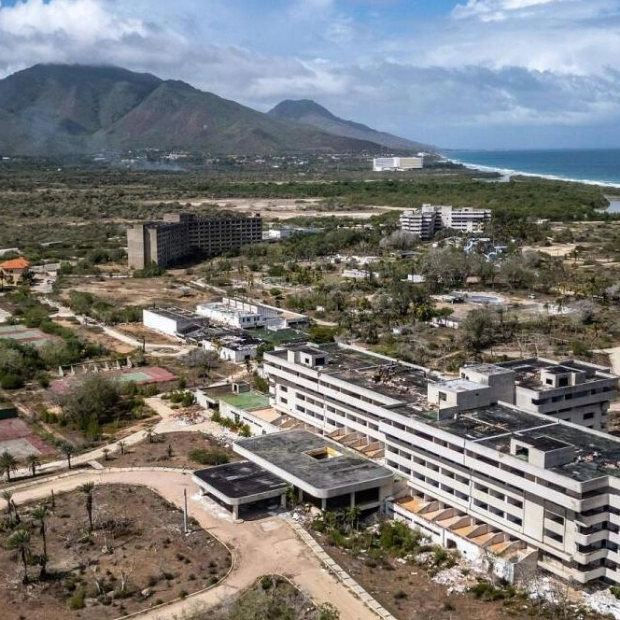One day, a mountainside in Norway will collapse into the sea below, triggering a catastrophic tsunami, yet residents near the fjord remain unconcerned. The Akerneset mountain in western Norway, covered in green moss and shrubs, has been gradually disintegrating for decades, with its eastern flank eroding up to 10 centimeters (3.9 inches) annually, slowly sliding into the Sunnylvsfjord below.
"The entire mountainside is unstable and moving, and it could cause a significant collapse," said geologist Lars Harald Blikra, who has been monitoring a fissure for about 20 years as part of his work at the Norwegian Water Resources and Energy Directorate. He explained that falling rock masses, whether in one large piece or several over time, would "enter the fjord, generating large tsunamis," while wearing his orange safety helmet.
According to a 2016 risk assessment by Norway's Directorate for Civil Protection, 54 million cubic meters (1,907 cubic feet) of rock could potentially detach, creating waves dozens of meters high that could inundate about 10 villages along the fjord within minutes. This scenario was the basis for the Norwegian disaster film "Bolgen" ("The Wave"), which Blikra emphasized is a "real-life" threat. In 1934, a nearby landslide caused a deadly tsunami with waves up to 64 meters, killing 40 people.
The villages of Hellesylt and Geiranger, located at the inner end of the fjord, are at the highest risk. In worst-case scenarios, these popular tourist destinations could be hit by waves 70 to 80 meters high. Olav Arne Merok, a lifelong resident of Geiranger in his 70s, would be among those affected. "Here, we're at around 30-40 meters (altitude). Obviously, if the wave is 90 meters high, we'll be underwater," he said with a laugh, adding, "But we can't live in constant fear. Otherwise, you stop living."
Geir Gjorva, a 69-year-old shipping agent, was also calm. "Nobody knows how big (the wave) will be, if it will be like this, this, or even this," he said, gesturing with his arm. "It could arrive slowly... or quickly. No-one knows." He noted that the topic is not a daily conversation but acknowledged that the warning system and emergency measures are effective.
Due to the imminent danger, Akerneset is one of the most closely monitored mountains globally, equipped with a variety of GPS and topographic instruments on the surface and sensors deep within to track its movements. Geologists believe the mountainside will not fall without warning; signs will precede a major collapse, allowing time for evacuation. Einar Arve Nordang, the newly elected mayor of Stranda, which includes Hellesylt and Geiranger, admitted that evacuating thousands due to a landslide risk is a daunting prospect but insisted, "We are ready." All emergency plans are in place, and the population is regularly updated.
Experts atop Akerneset are considering methods to postpone the inevitable, such as draining the mountain of water, which acts as both a lubricant and a pressurizer. However, this would be complex and expensive, requiring all equipment to be transported by helicopter. Sverre Magnus Havig, a senior director at the Water Resources and Energy Directorate, suggested that such an operation could significantly delay the collapse, potentially pushing it to the next 1,000 years.






